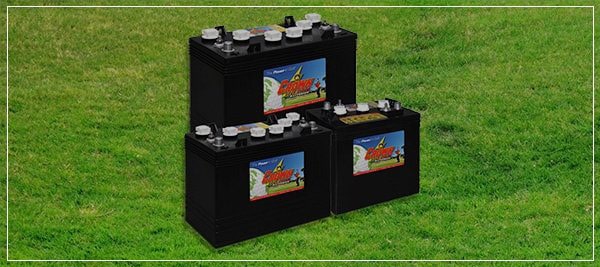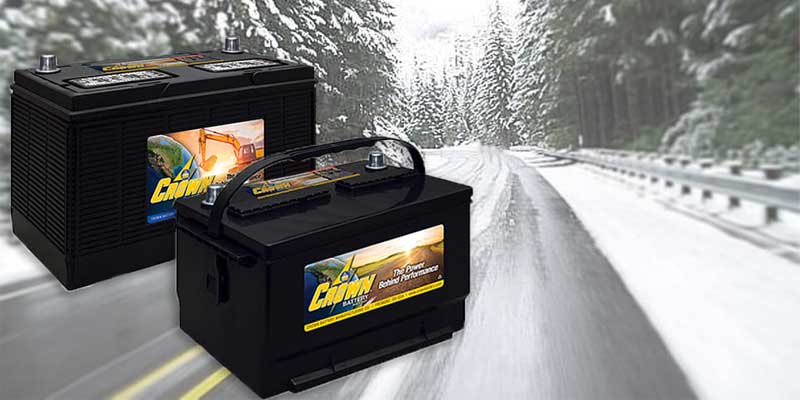Heat and cold extremes will shorten the life of mechanical equipment faster than any other environmental influence. Not only is it critical to determine the right battery for your project, but to take proactive steps to extend the life of your investment as well.
Extreme temperatures slash renewable energy system performance and battery life. Fortunately, with a few simple steps, you can save headaches, maximize lifespan, and avoid the need for early battery replacement.
Why Do Temperatures Affect Batteries
Batteries are rated at roughly 77℉, and perform best between 50℉ - 85℉. Sadly, many batteries are routinely exposed to temperatures from freezing to well over 100℉. At colder temperatures, batteries lose 10% of their capacity for every 15-20 degrees below 80℉ because the internal molecules close down.
Excessive heat also shortens battery life because it accelerates corrosion and causes battery fluid to evaporate, damaging the internal grids. For every 15 degrees above the operating temperature of 77℉, the battery capacity increases but cuts the lifespan in half. Typical storage solutions (outside, shelters, old refrigerators, or boxes) compromise battery life even faster where temperatures can exceed 140℉. Here are 6 keys to a prolonging the battery life in any climate.
Protect Batteries from the Environment
Keep batteries where temperatures remain between 50℉-85℉. For AGM and other low/no-maintenance batteries, this means storing them inside your home can work well. For flooded batteries, use a vented box with a lock in a shed or garage with easy access for maintenance. Never install spark-producing devices in any enclosure because they could ignite an explosion during charging.
Batteries should be arranged so they are the same temperature, so leave air gaps of roughly ½” between each battery to prevent their cores from getting warm. If batteries are placed near an exterior wall, insulate the wall and allow for air circulation. If your batteries must be exposed to low temperatures on a regular basis, buy a larger battery bank to make up for the decrease in capacity. As always, avoid direct sunlight since it can warm some cells more than others.
Choose the Right Battery Type for the System
Every battery type has its advantages and disadvantages. Lead-acid batteries are the most popular because they are affordable, reliable, up to 97% recyclable, and proven for over 100 years. They will require regular maintenance and are heavier, though. AGM (Absorbent Glass Mat) batteries offer low internal resistance, long service life, high current delivery, and extremely low maintenance.
However, their cost per amp-hour is greater than flooded batteries. Lithium-ion batteries have the highest power density and require extremely low maintenance. The disadvantages to this newer technology are in the temperamental nature that is prone to fires, higher cost, and their impact on the environment because they are rarely recyclable.
Select Batteries Built to Last
Construction methods have a huge impact on the lifespan of batteries - even among those with similar specifications. For instance, thicker plates in lead batteries provide more material for chemical reactions which improves longevity. Automated production increases precision, reduces corrosion and maintenance, and improves lifespan. One of the biggest advances in this area is Cast On Strap (COS) assembly, which allows for 4,000 adjustments versus a mere 40 for hand welding. For maximum power delivery and life, select deep-cycle batteries designed for renewable energy systems, rather than car batteries or non-RE batteries.
Know the Depth of Discharge
To avoid shortening a battery’s lifespan, never discharge batteries below 80% depth of discharge. (Meaning draining a battery to less than 20% power supply left. Maintaining 50% depth of discharge is preferred.) Batteries typically lose 10% of their capacity for every 15-20 degrees below 80℉. This means there may be less storage available than anticipated. If batteries continually discharge too deeply, consider adding additional battery banks to create a safety buffer and increase lifespan.
Closely Monitor the Battery Bank at First
To ensure batteries are properly calibrated to the system and performing optimally, they should be inspected daily for the first two weeks with a voltmeter and hydrometer. Addressing variables at the beginning of battery use will minimize the chance of damage to the battery bank and protect the investment in the system and batteries.
Perform Regular Maintenance
Even low or no maintenance batteries need to be regularly inspected to make sure they are performing properly. Battery manuals offer guidelines and schedules for maintenance. However, some key points to remember are: removing jewelry and wearing protective eyewear and gloves before handling batteries, clean terminals with a scouring pad or steel brush to avoid acidic buildup, and check fluid levels to prevent sulfation.
Even the best batteries struggle when exposed to the elements. However choosing the right batteries, maintaining, and protecting them will ensure maximum longevity and performance for years to come.












